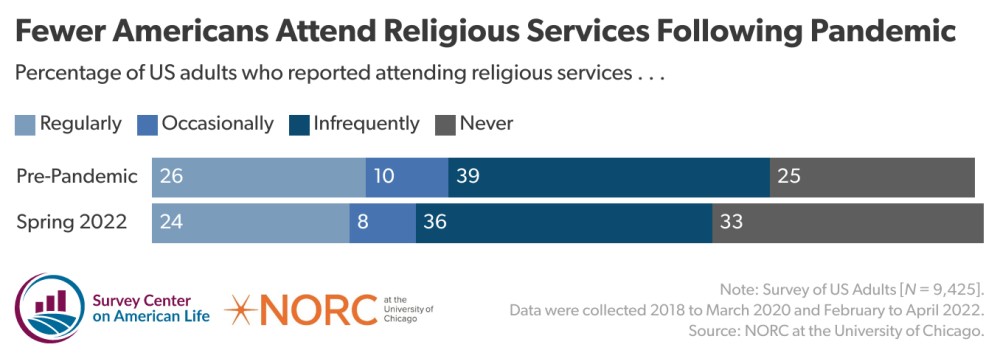Church attendance declines as pandemic enters year three

At the beginning of the COVID-19 pandemic, nearly every congregation in the United States shut down, at least for a while.
For some Americans, that was the push they needed to never come back to church.
A new report, which looked at in-person worship attendance patterns before the beginning of the pandemic and in 2022, found that a third of those surveyed never attend worship services. That’s up from 25 percent before the start of the pandemic.




